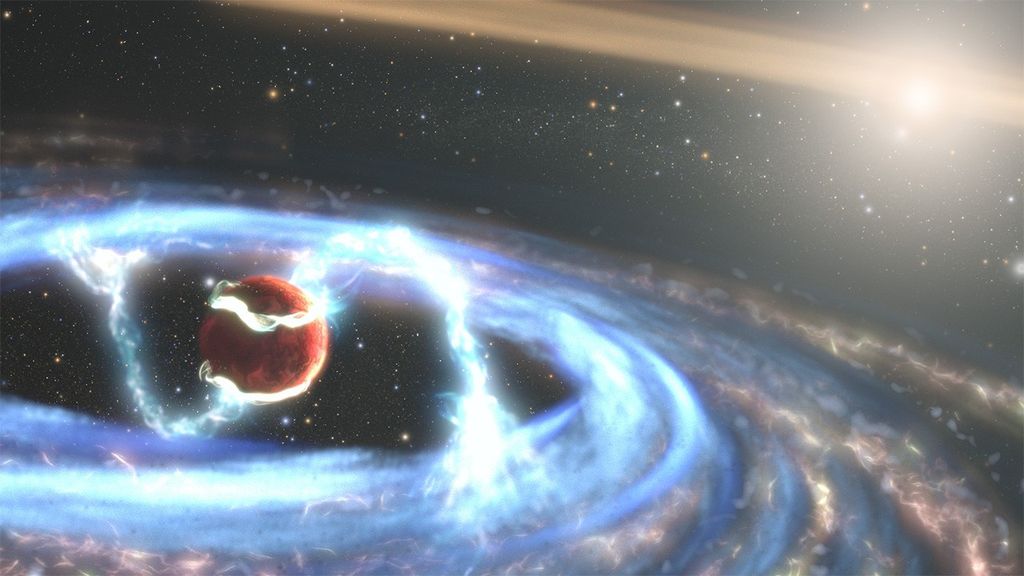Cassini Significant Event Report
For Week Ending 08/23/02
The most recent spacecraft telemetry was acquired from the Goldstone tracking station on Wednesday, August 21. The Cassini spacecraft is in an excellent state of health and is operating normally. Information on the spacecraft's position and speed can be viewed on the "Present Position" web page.
August 18th marked the 3-year anniversary of Cassini's Earth flyby.
On-board activities this week included clearing of the ACS high water marks, an autonomous Solid State Recorder
Memory Load Partition repair, memory readout of the CDS state matrix, Radio and Plasma Wave Science High
Frequency Receiver calibrations, and uplink of the Imaging Science Subsystem flight software checkout. The
checkout will execute later this month.
A Project briefing was held for the Cruise 35 sequence. Program Manager approval was given for the sequence
to proceed to implementation.
A joint Satellite Orbiter Science Team / Project Science Group (PSG) Surfaces Working Group meeting was held
to finalize the plans for the Enceladus flyby on Rev 3.
The first merged Science Operations Plan product for tour sequences S11/S12 was handed off to ACS for
end-to-end pointing validation via the Kinematic Prediction Tool /Inertial Vector Propagator.
A Flight Hardware safety inspection and an Electro-static Discharge (ESD) survey was performed at the
Instrument Operations Facility Instrument testbed laboratory. The lab was considered to be in good shape by the
surveyors, with a few suggestions given to bring the lab into full compliance with standards. Cognizant engineers for RADAR, Radio Science Subsystem, Imaging Science Subsystem and Visual and Infrared Mapping
Spectrometer have taken actions to implement the suggestions.
The topic at this week's Mission Planning Forum addressed the review of a draft Engineering Change Request to
update the probe mission timeline in the Mission Plan, and address the interfaces between orbiter science and the
probe mission. Specifically, it will define the boundary times of the start of probe activities at the start of S6, the Iapetus C window, the critical sequence window, and the probe playback plan, including the end of probe
activities. Orbiter activity restrictions during each phase were also discussed. Eight Requests for Action submitted at the last Cassini Project Science Group meeting were reviewed and dispositioned this week. One was withdrawn and the rest were accepted for action.
Edison power glitches occurred last Saturday, and early Monday morning affecting the Cassini Integrated Test
Laboratory. At the request of the Cassini Program, JPL building 230 was transferred from Edison power to
generator power until the UPS capability is restored.
Mission Assurance supported an internal ISO audit. The topic under evaluation was "Control of Non-Conforming
Product." Cassini documents non-conformances via Incident Surprise Anomaly (ISA) reports. Verification,
validation and corrective actions are thoroughly documented prior to anomaly report evaluation and closure by
Mission Assurance. In addition, ISAs are tracked and reported on monthly, in the form of status, risk assessment, trend analysis and metrics.
Additional information about Cassini-Huygens is online at http://saturn.jpl.nasa.gov.
Cassini will begin orbiting Saturn on July 1, 2004, and release its piggybacked Huygens probe about six months later for descent through the thick atmosphere of the moon Titan. Cassini-Huygens is a cooperative mission of NASA, the European Space Agency and the Italian Space Agency. JPL, a division of the California Institute of Technology in Pasadena, manages the mission for NASA's Office of Space Science, Washington, D.C.
Media Relations Office
Jet Propulsion Laboratory
California Institute of
Technology
National Aeronautics and Space
Administration
Pasadena, Calif. 91109.
Telephone (818) 354-5011


































